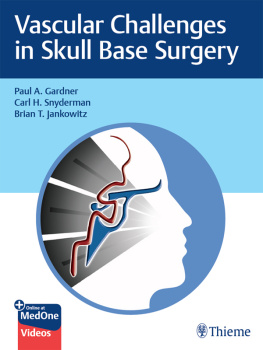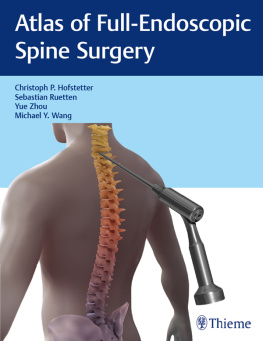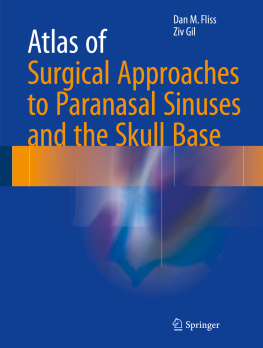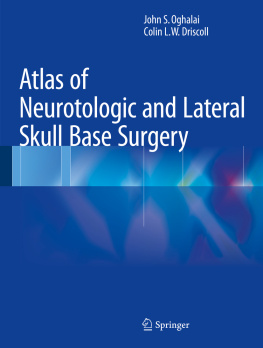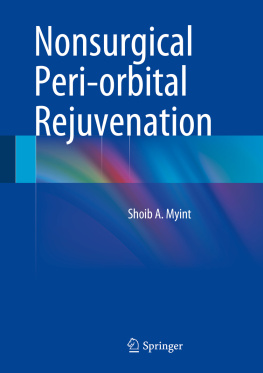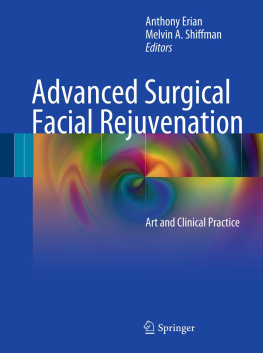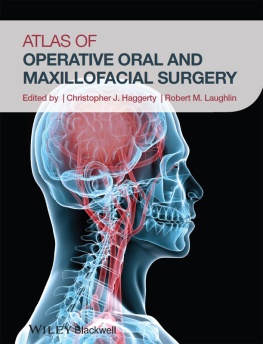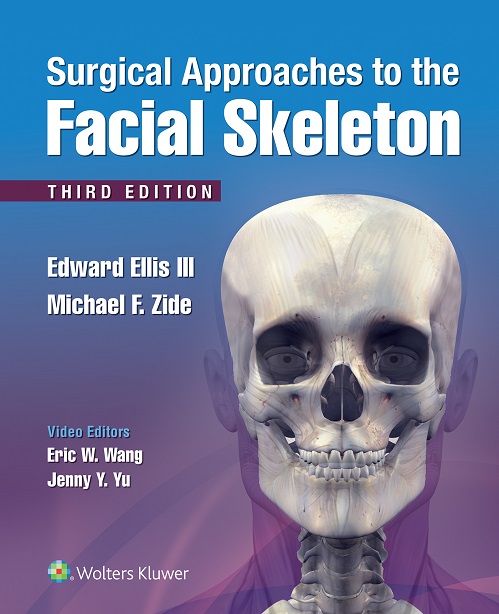Section 1
BASIC PRINCIPLES FOR APPROACHES TO THE FACIAL SKELETON
Chapter 1
Basic Principles for Approaches to the Facial Skeleton
M aximum success in skeletal surgery depends on adequate access to and exposure of the skeleton. Skeletal surgery is simplified and expedited when the involved parts are sufficiently exposed. In orthopaedic surgery, especially of the appendicular skeleton, the basic rule is to select the most direct approach possible to the underlying bone. Therefore, incisions are usually placed very near the area of interest while major nerves and blood vessels are retracted. This involves little regard for esthetics but allows the orthopaedic surgeon greater leeway in the location, direction, and length of the incision.
Surgery of the facial skeleton, however, differs from general orthopaedic surgery in several important ways. The first factor in incision placement is not surgical convenience but facial esthetics. The face is plainly visible to everyone, and a conspicuous scar may create a cosmetic deformity that can be as troubling to the individual as the reason for which the surgery was performed. Cosmetic considerations are critical in light of the emphasis that most societies place on facial appearance. Therefore, as we will see in this book, all the incisions made on the face must be placed in inconspicuous areas, sometimes distant from the underlying osseous skeleton on which the surgery is being performed. For instance, placement of incisions in the oral cavity allows superb exposure of most of the facial skeleton, with a completely hidden scar.
The second factor that differentiates incision placement on the face from incisions placed anywhere else on the body is the presence of the muscles and nerve (cranial nerve VII) of facial expression. The muscles are subcutaneous structures, and the branches of the facial nerve that supply them can be traumatized if incisions are made in their path. This can result in a paralyzed face, which is not only a severe cosmetic deformity but can also have great functional ramifications. For instance, if the ability to close the eye is lost, corneal damage can ensue, affecting vision. Therefore, placement of incisions and dissections that expose the facial skeleton must ensure that damage to the facial nerve is minimized. Many dissections to expose the skeleton require care and electrical nerve stimulation to identify and protect the nerve. Approaches using incisions in the facial skin must also take into consideration the muscles of facial expression. This is especially important for approaches to the orbit, where the orbicularis oculi muscle must be traversed. Closure of some incisions also affects the muscles of facial expression. For instance, if a maxillary vestibular incision is closed without proper reorientation of the perinasal muscles, the nasal base will widen.
The third factor in facial incision placement is the presence of many important sensory nerves exiting the skull at multiple locations. The facial soft tissues have more sensory input per unit area than soft tissues anywhere else in the body. Loss of this sensory input can be a great inconvenience to the individual. Therefore, the incisions and approaches used must avoid injury to the sensory nerves. An example is dissection of the supraorbital nerve from its foramen/notch in the coronal approach.
Other important factors are the patients age, existing unique anatomy, and expectations. The age of the patient is important because of the possible presence of the wrinkles that come with age. Skin wrinkles serve as a guide and offer the surgeon the opportunity to place incisions within or parallel to them. Existing anatomic features that are unique to the individual can also facilitate or hamper incision placement. For instance, pre-existent lacerations can be used or extended to provide surgical exposure of the underlying skeleton. The position, direction, and depth of a laceration are important variables in determining its utility. The presence of old scars may also direct incision placement; the old scar may be excised and used to approach the skeleton. Sometimes, an old scar may not lend itself to use and may even cause the new incision to be positioned such that the old scar is avoided. Hair distribution may also direct the position of incisions. For instance, the incision for the coronal approach is largely determined by the patients hairline. Ethnic characteristics also have a bearing on whether an incision will be placed in a conspicuous area. History or ethnic propensity for hypertrophic scarring, keloid formation, and hyper- or hypopigmentation may alter the decision as to whether or where to place an incision.
p. 3 p. 4
The patients expectations and wishes must always be considered in any decision about location of an incision. For instance, patients who repeatedly require treatment of facial injuries may not be concerned with local cutaneous approaches to the naso-orbito-ethmoid region, whereas other individuals may be very concerned about the location of incisions. Therefore, the choice of surgical approach depends at least partly on the patient.
PRINCIPLES OF INCISION PLACEMENT
Incisions placed in areas that are not readily visible, such as within the oral cavity or far behind the hairline, are not of esthetic concern. Incisions placed on exposed surfaces of the face, however, must follow some basic principles so that the scar will be less conspicuous. These principles are outlined in the following text.
Avoid Important Neurovascular Structures
Although this is an obvious consideration, avoiding anatomic hazards during placement of incisions is only a secondary consideration in the face. Instead, placing the incision in a cosmetically acceptable location takes priority. Important neurovascular structures encountered during the dissection must be dealt with by dissecting around them or by retracting them.
Use as Long an Incision as Necessary
Many surgeons tend to use short incisions. If the soft tissues around a short incision are stretched to obtain sufficient exposure of the skeleton, the additional trauma from retraction may create a less satisfactory scar than a longer incision would. A well-placed long incision may be less perceptible than a short incision that is placed poorly or requires great retraction. A long incision heals as quickly as a short one.


